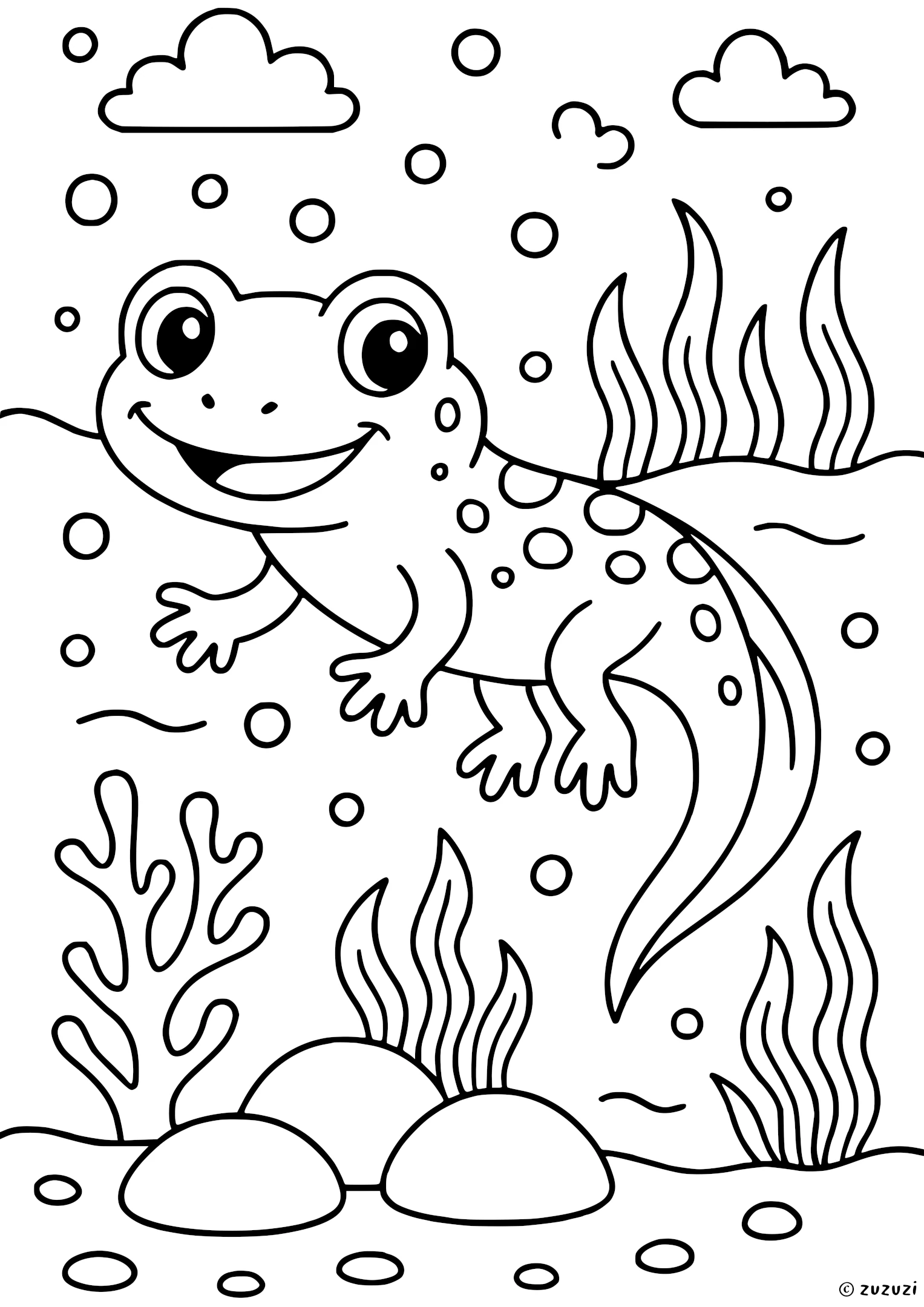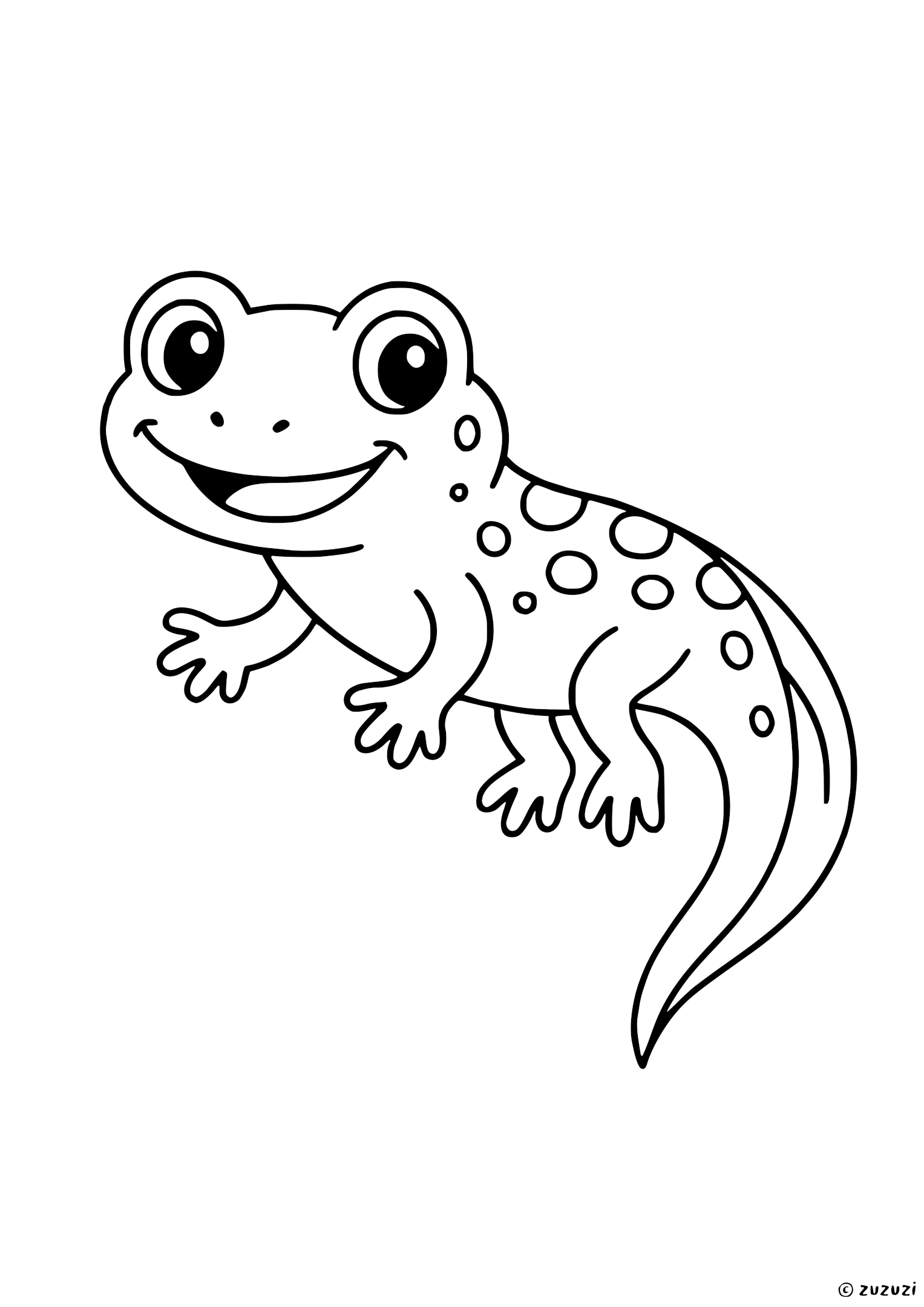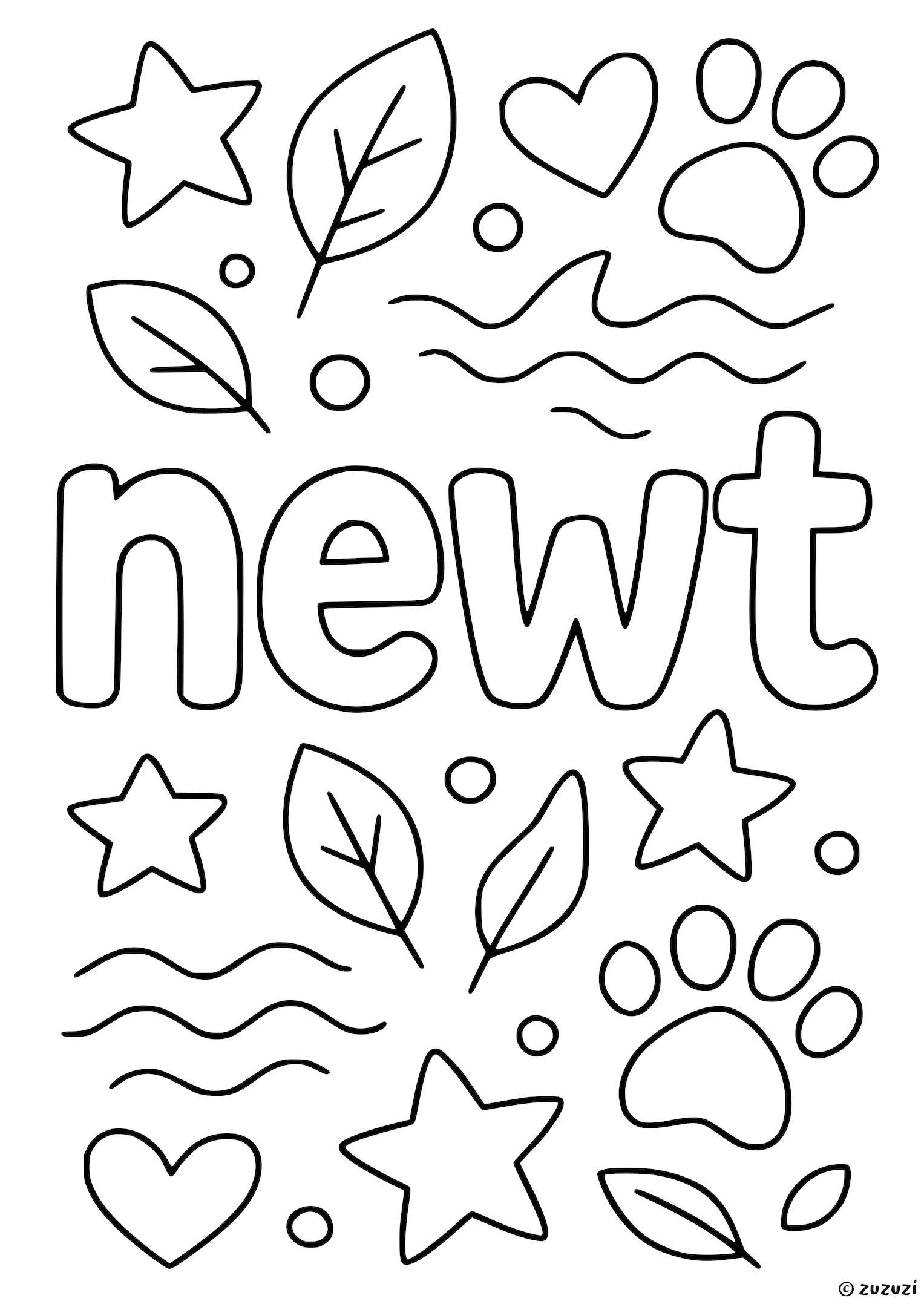Coloring ideas for Newt
Newts often have smooth, moist skin and can be brown, olive green, or orange with darker spots along their backs. Some even have bright yellow or red bellies. You can use shades of green, tan, or rusty orange for their bodies and make their spots stand out with darker browns or blacks. Their underwater world is a great chance to play with blues and greens for water and plants, plus a few bright colors for coral or pebbles.
On the back of the page, why not try writing some fun facts about the Newt, or its name in different languages? You could even give it a name of your own, or draw your own version using your imagination!
What is a Newt?
A newt is a type of amphibian closely related to salamanders. It has a long, slender body, smooth skin, and a tail that stays with it for life. Newts usually live in damp forests or near freshwater ponds and streams. They start their lives in water and later move onto land, though many return to the water to breed. Depending on the species, newts can live for about 6 to 15 years. Most are quite small, often around 10 to 15 centimeters long, and they use their legs and tail to swim gracefully. Their diet includes tiny insects, worms, and other small water creatures. Newts make soft chirping or squeaking sounds, and their moist, smooth skin is a big part of what makes them special among amphibians.
How to say Newt in different languages?
- English: Newt
- French: Triton
- Spanish: Tritón
- Arabic: سمندل الماء
- German: Molch
- Chinese: 蝾螈
- Japanese: イモリ
- Korean: 도롱뇽
- Portuguese: Tritão
- Italian: Tritone
- Hindi: जल छिपकली
- Russian: Тритон
- Turkish: Semender


